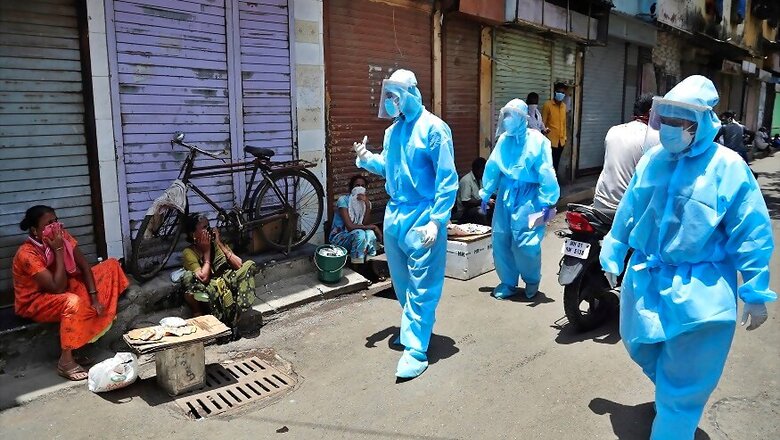
views
Using a computer model, scientists at the Indian Institute of Technology (IIT) - Bombay have shown that a hotter and drier weather is linked to lower survival chances of the novel coronavirus on surfaces, a finding that may lead to better sanitisation guidelines for public spaces across the world.
The study, published in the journal Physics of Fluids, assessed how long the novel coronavirus, SARS-CoV-2, remains viable for infection after someone with COVID-19 coughs or sneezes.
In order to calculate this, the researchers, including Rajneesh Bhardwaj and Amit Agarwal from IIT-Bombay, examined the drying time of respiratory droplets from infected subjects on various surfaces in six cities around the world, including New York and Singapore.
These droplets, which are about the size of the width of a single human hair, are expelled from the mouth or nose when a person with COVID-19 coughs, sneezes, or even speaks moistly, the study noted.
Once the droplets carrying the virus evaporate, the scientists said the residual virus becomes inactive, so the survival and transmission of COVID-19 are directly impacted by how long the droplets remain intact.
Based on their analysis, the researchers said the growth rate of COVID-19 is weakly linked to the outdoor weather, adding that the chances of the survival of the virus "increases roughly by five times under a humid condition as compared to a dry condition."
In the study, the scientists used a mathematical model to assess the drying time for the droplets under different conditions and showed that ambient temperature, the type of surface, and humidity play critical roles.
Citing an example, they said higher ambient temperature helped to dry out the droplet faster, and drastically reduced the chances of virus survival.
The researchers added that in places with greater humidity, the droplet stayed on surfaces longer, and the virus survival chances improved.
They also determined the droplet drying time in different outdoor weather conditions and examined if this data connected to the growth rate of the COVID-19 pandemic in six cities across the world -- New York, Chicago, Los Angeles, Miami, Sydney, and Singapore.
When the scientists plotted the growth rate of COVID-19 patients in these places with the drying time of a typical droplet, they found that in the cities with a larger growth rate of the pandemic, the drying time was longer.
"In a way, that could explain a slow or fast growth of the infection in a particular city. This may not be the sole factor, but definitely, the outdoor weather matters in the growth rate of the infection," said Rajneesh Bhardwaj, one of the co-authors of the study.
"Understanding virus survival in a drying droplet could be helpful for other transmissible diseases that spread through respiratory droplets, such as influenza A," said Amit Agrawal, another author of the study.
Citing the limitations of the study, the scientists said they assumed air to be stationary in their model along with the consideration that the evaporation time is expected to reduce in the presence of air currents.
"The value of the predicted evaporation times is on the conservative side, and the actual evaporation time will be smaller than that obtained here," the researchers noted in the study.
Despite these drawbacks in the model, they believe that surfaces like smartphone screens, cotton, and wood, should be cleaned more often than glass and steel surfaces since the latter are relatively hydrophilic, and the droplets evaporate faster on these materials.




















Comments
0 comment